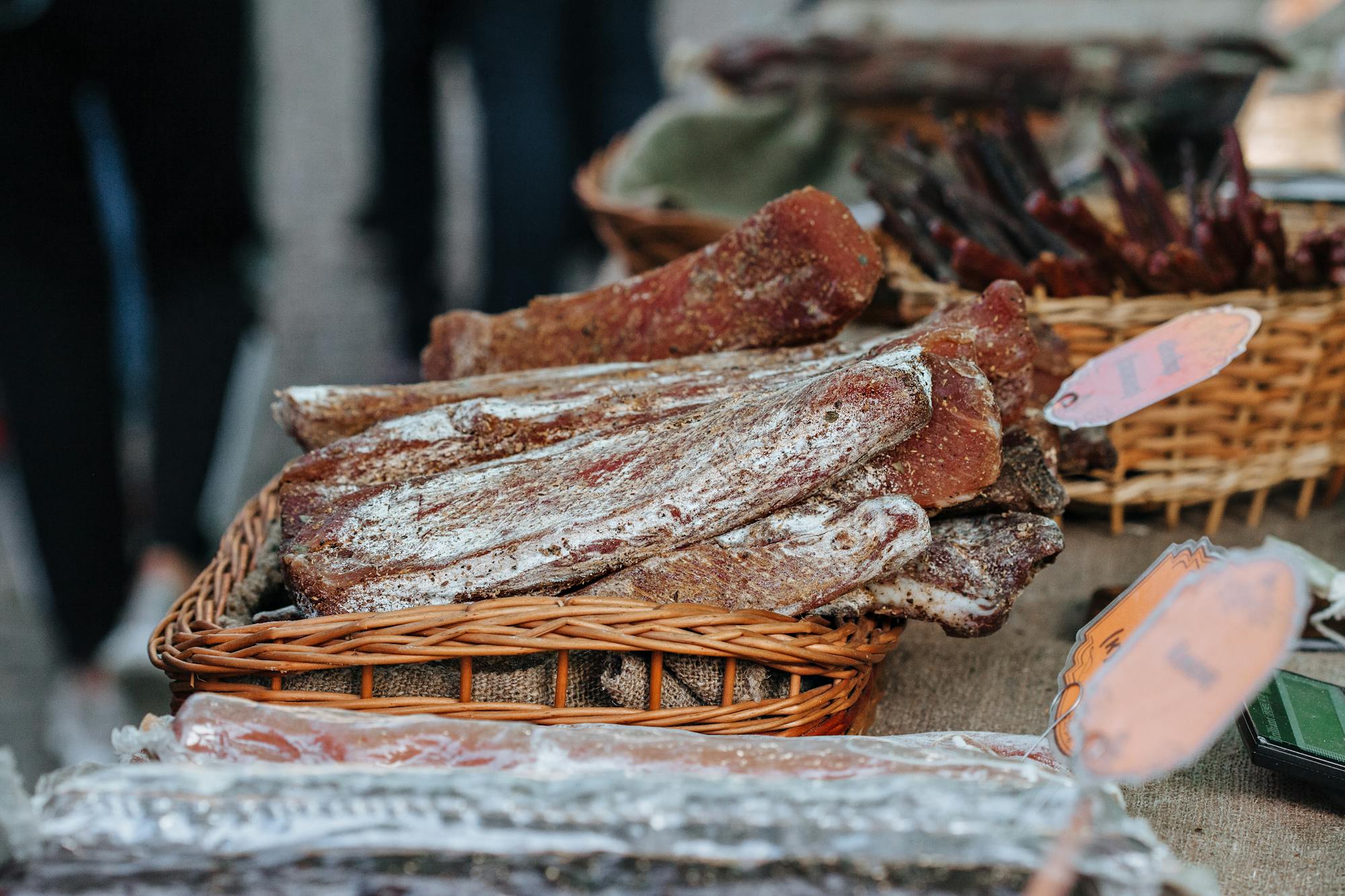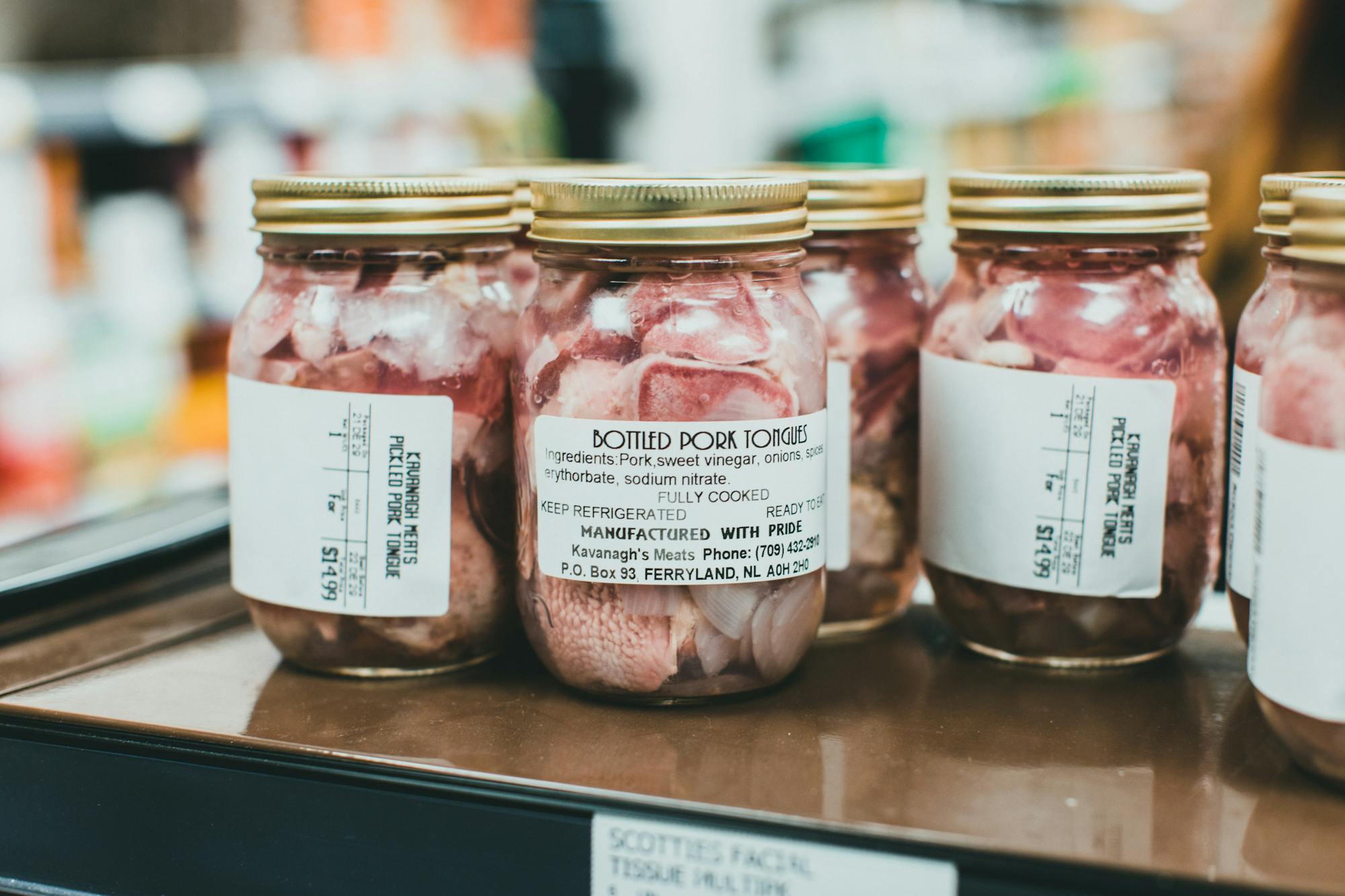Preserving meat isn’t just about keeping food edible — it’s about flavor, safety, and efficiency. Whether you’re a home cook storing jerky or a food producer aiming for shelf stability, these 10 methods of meat preservation cover both traditional and modern approaches.
1. Refrigeration — Short-Term Preservation
Refrigeration slows bacterial growth, buying you days of safe storage. Keep fresh meat at 0–4 °C and consume within a few days.
👉 USDA Refrigeration and Food Safety Guidelines
- Beef: 3–5 days
- Ground meat: 1–2 days
- Poultry: 1–2 days
2. Freezing — Long-Term Storage Without Chemicals
Freezing stops microbial activity by putting bacteria in stasis. For best quality:
- Temperature: −18 °C or below
- Packaging: Airtight to prevent freezer burn
- Shelf life: 3–12 months, depending on the cut
👉 Freezer Storage Times – USDA Chart
3. Curing with Salt and Nitrite — Flavor Meets Safety
Curing is one of the oldest meat preservation methods. Salt lowers water activity, and nitrite inhibits Clostridium botulinum. This method creates classics like bacon, prosciutto, and corned beef.
- Dry cure: Rubbing with curing salt
- Wet cure (brine): Submerging in salt solution
- Combination: Cure + drying/smoking for shelf-stable products
👉 Everything You Need to Know About Salt Curing Meat

4. Smoking — Surface Protection and Distinct Flavor
Smoking deposits antimicrobial compounds like phenols and acids on the meat’s surface.
- Cold smoking: Below 30 °C, used with curing
- Hot smoking: 52–80 °C, cooks while preserving
👉 Meat Smoking Science – MeatScience.org

5. Drying / Dehydration — Lowering Water Activity
Drying reduces moisture, making it difficult for microbes to thrive. Jerky, biltong, and air-dried hams rely on:
- Controlled temperature and humidity
- Salt or cure to enhance safety
- Target water activity (aw) below 0.85
👉 Homemade Jerky Safety Guidelines

6. Fermentation — Acidification for Shelf Stability
Fermented meats (e.g., salami) use lactic acid bacteria to lower pH rapidly, creating an environment hostile to pathogens. Often paired with drying for long-term stability.
- Target pH: ≤ 5.3
- Controlled time-temperature
👉 Salami Safety: pH and Aw Targets

7. Thermal Processing / Canning — True Sterilization
Canning involves pressure cooking sealed containers to kill both bacteria and spores, making meat shelf-stable at room temperature.
- Only pressure canning is safe for low-acid meats
- Water-bath canning is unsafe due to botulism risk
👉 USDA Complete Guide to Home Canning

8. Vacuum Sealing & MAP — Extending Fridge Life
Removing oxygen (vacuum) or replacing it with CO₂/N₂ (MAP) slows spoilage and oxidation.
- Best combined with refrigeration
- Doesn’t kill pathogens — hygiene matters
👉 Vacuum Packaging and Shelf Life – Food Safety Magazine
9. Food Irradiation — Cold Sterilization
Irradiation uses ionizing radiation (gamma, X-ray, or electron beam) to kill microbes without heating the product.
- Preserves raw texture
- Extends chilled/frozen shelf life significantly
👉 FDA: Food Irradiation Overview
10. High-Pressure Processing (HPP) — Modern, Minimalist
HPP applies 300–600 MPa pressure to inactivate pathogens while preserving flavor and nutrients.
- Often used for ready-to-eat products
- Works best combined with refrigeration or MAP
👉 High Pressure Processing Explained
Combining Methods for Maximum Effect (“Hurdle Technology”)
The safest and longest-lasting preservation comes from stacking multiple hurdles:
- Example: Cured + fermented + dried salami → pH drop + low water activity + antimicrobial surface → shelf stable.
- Example: Vacuum-packed cooked meat → pasteurization + oxygen removal + cold storage → extended refrigerated shelf life.
⚠️ Safety Reminders
- Keep meat below 4 °C whenever it’s not actively being processed.
- Use regulated curing salts; don’t guess nitrite levels.
- Follow validated pressure canning recipes for meat; don’t improvise.
